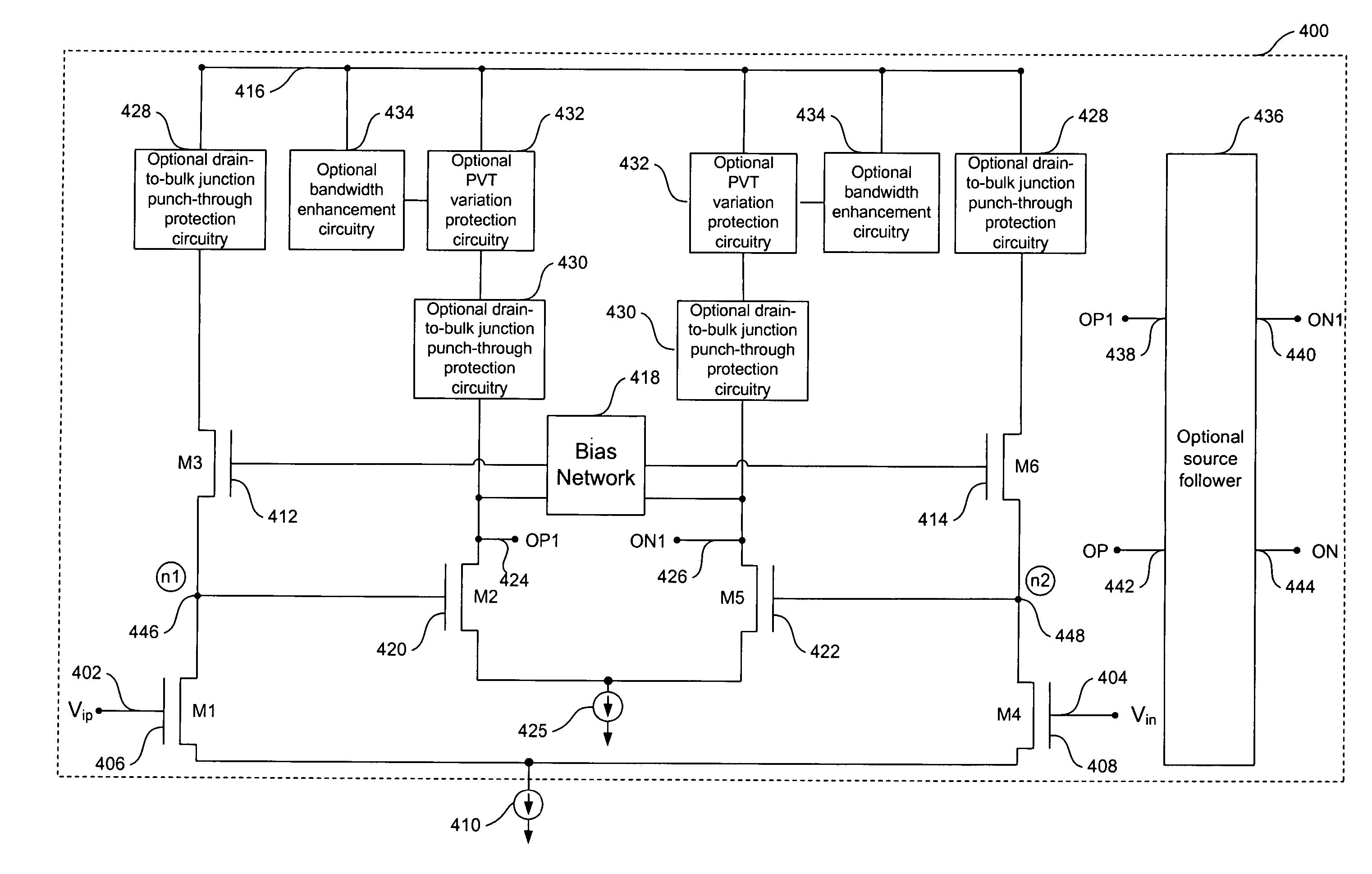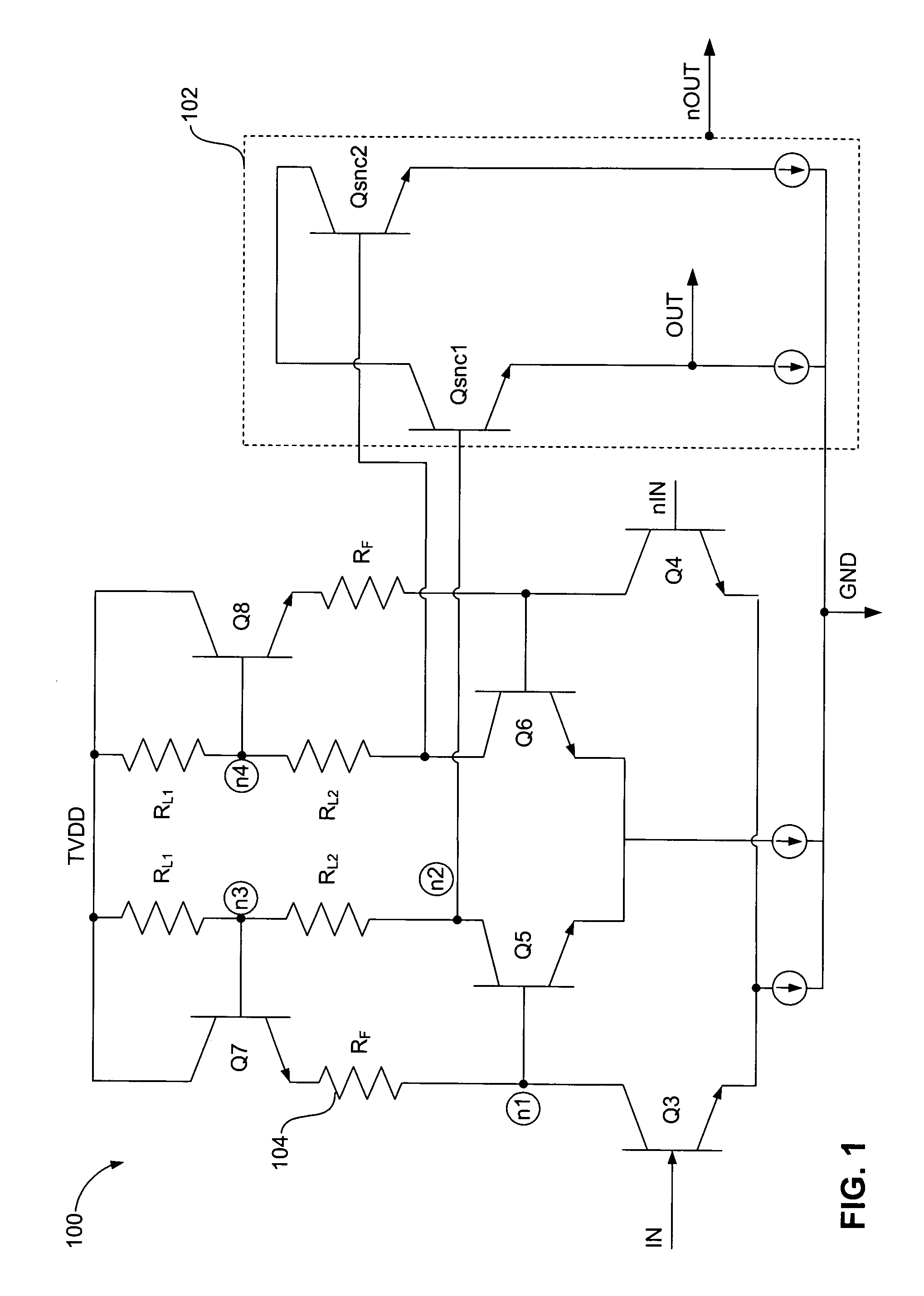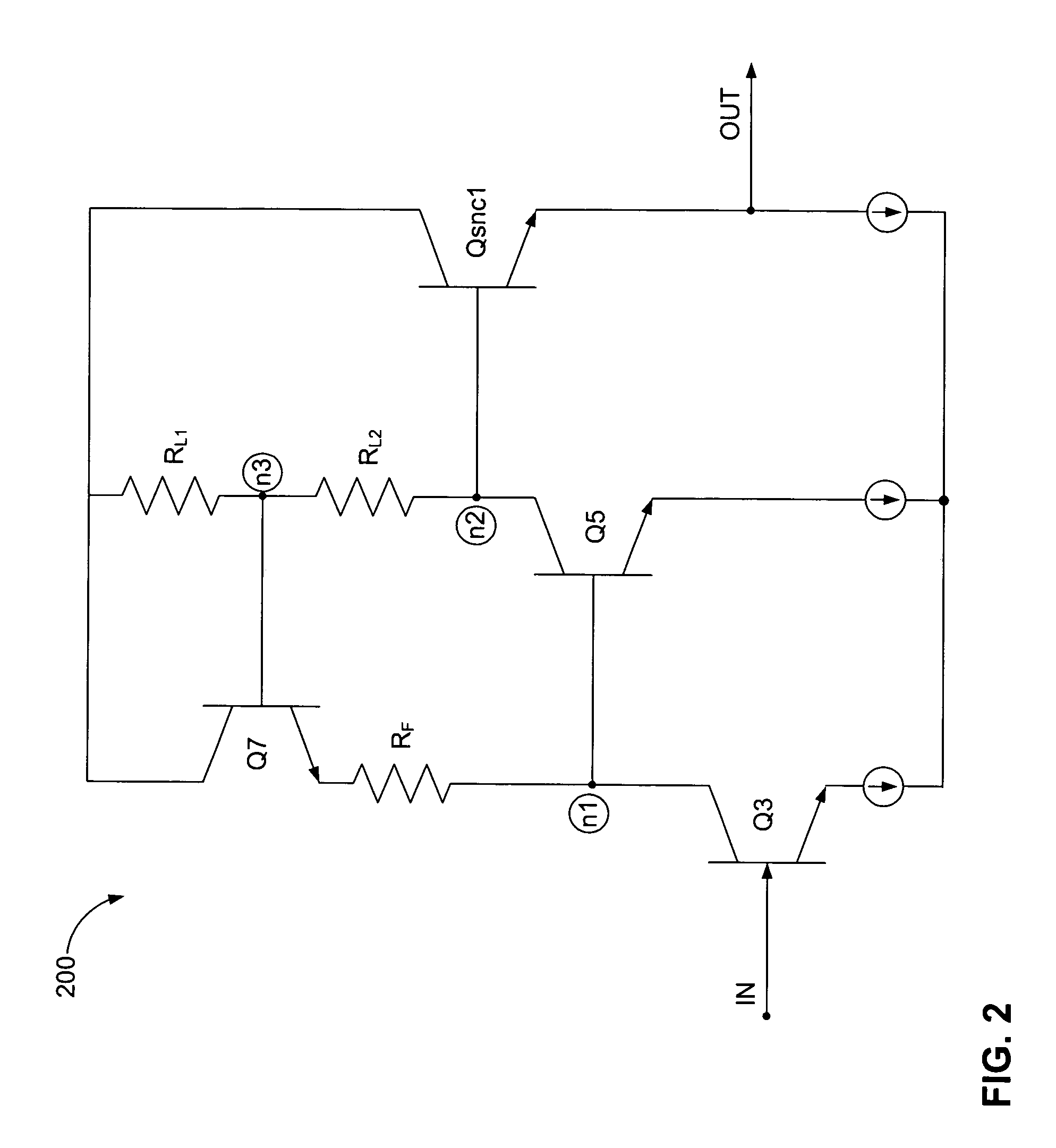Wideband CMOS gain stage
a cmos gain stage and wideband technology, applied in the field of amplifiers, can solve problems such as gate oxide breakdown and/or draining to bulk junction punch-through
- Summary
- Abstract
- Description
- Claims
- Application Information
AI Technical Summary
Benefits of technology
Problems solved by technology
Method used
Image
Examples
Embodiment Construction
Table Of Contents
[0023]I. Bipolar Gain Stage[0024]II. CMOS Gain Stage[0025]A. Introduction[0026]B. Bias Network Configured for an Output Source Follower[0027]C. Bias Network Configured for Omission of an Output Source Follower[0028]D. Supply Voltage and Drain-to-Bulk Junction Punch-Through[0029]E. PVT Independent Gain[0030]F. Bandwidth Enhancement[0031]III. Conclusions
I. Bipolar Gain Stage
[0032]FIG. 1 is a schematic diagram of a bipolar amplifier 100. FIG. 2 is a schematic diagram of a bipolar “hay circuit”200, which is taken from the bipolar amplifier 100 in FIG. 1. A gain of the bipolar amplifier 100 can be determined by analyzing the hay circuit 200.
[0033]The hay circuit 200 includes bipolar transistors Q3, Q5, and Q7, and resistors RL1 and RL2. The gain of the hay circuit 200 and of the bipolar-implemented amplifier 100 can be determined by denoting a resistive divider ratio “x,” as shown in equation 1:
[0034]x=RL1(RL1+RL2)EQ.(1)
[0035]Transconductances of the transistors Q3, Q5,...
PUM
 Login to View More
Login to View More Abstract
Description
Claims
Application Information
 Login to View More
Login to View More - R&D
- Intellectual Property
- Life Sciences
- Materials
- Tech Scout
- Unparalleled Data Quality
- Higher Quality Content
- 60% Fewer Hallucinations
Browse by: Latest US Patents, China's latest patents, Technical Efficacy Thesaurus, Application Domain, Technology Topic, Popular Technical Reports.
© 2025 PatSnap. All rights reserved.Legal|Privacy policy|Modern Slavery Act Transparency Statement|Sitemap|About US| Contact US: help@patsnap.com



